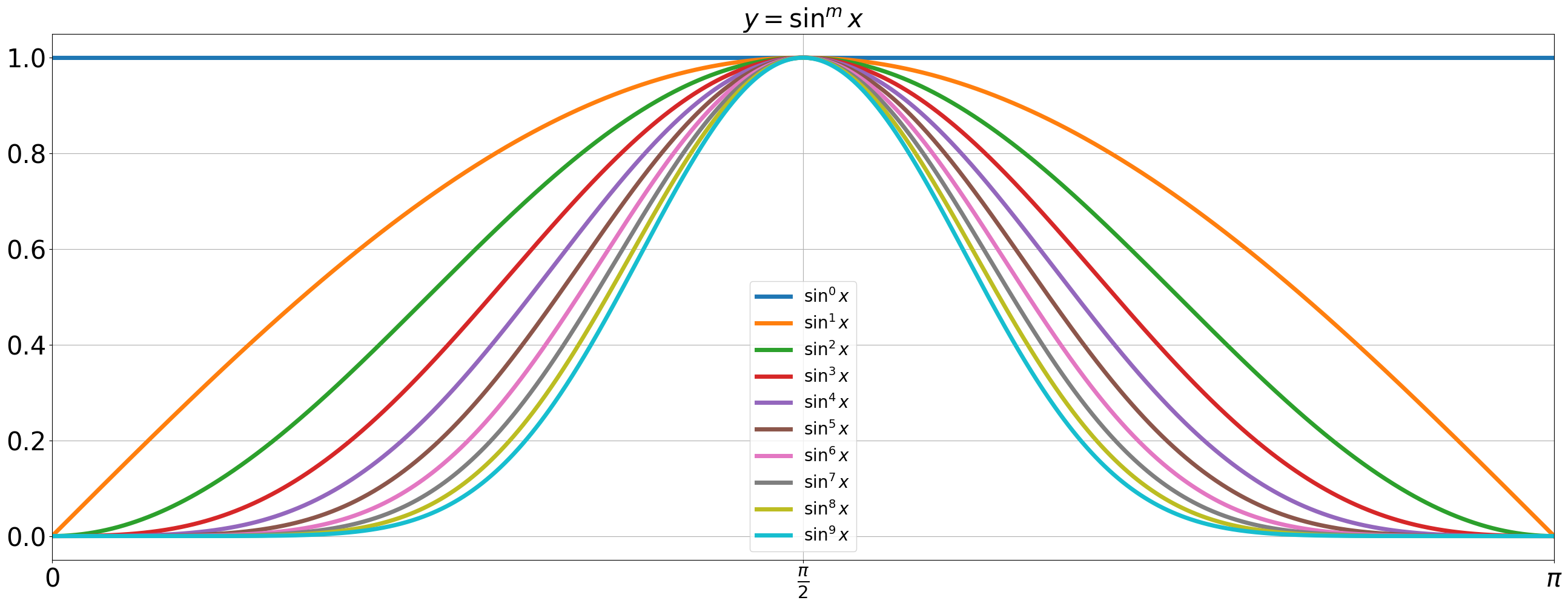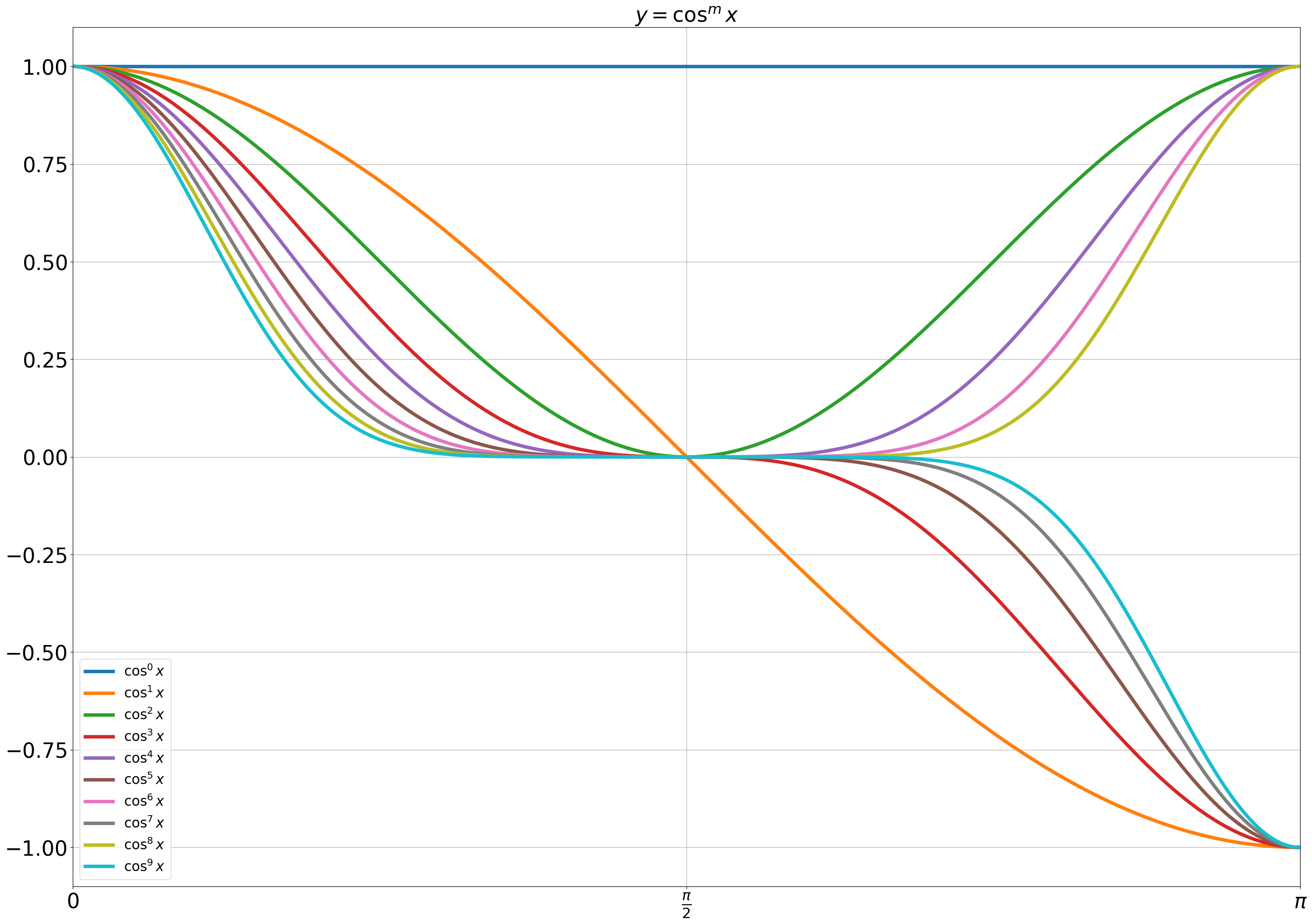Wallis' Formula
Proposition
The following equality holds:
Alternative Forms
This expression can also be written in the following ways.
Factoring the left-hand side gives:
Using double factorials:
Taking the reciprocal:
Rewriting in terms of double factorials:
Taking the square root of both sides:
Multiplying both sides by
Since
This form is also commonly used.
Moreover,
can also be interpreted as an asymptotic approximation.
Proof Using the Factorization of the Sine Function
As seen in the Basel Problem, the sine function can be formally factored as follows:
Substituting
Multiplying both sides by
Proof Using Wallis’ Integral
There is also an interesting proof using the following integral, known as Wallis’ integral:
The graph of the integrand

As
Wallis’ integral can be thought of as the area of the region enclosed by the graph of
As
Later, we will see that when deriving Wallis’ formula from Wallis’ integral, the ratio of
The graph of

Since
Now, by using integration by parts:
We obtain this recurrence relation.
Note that:
Applying the recurrence relation repeatedly for even and odd
On the other hand, since
Dividing each side by
Thus,
That is, the ratio of consecutive terms converges to
Therefore,
Thus, Wallis’ formula is obtained.
Asymptotics of Wallis’ Integral
Now, let’s examine Wallis’ integral further. Consider the product of consecutive terms.
Using the recurrence relation:
we have:
Repeating this process, we get:
From the earlier result,
That is,
and
This can be seen by graphing Wallis’ integrals:

Additional Notes
Wallis’ formula implies that the coefficient of
It is sometimes used in the proof of Stirling’s formula, which approximates factorials (or the gamma function).
It is also used to compute the Gaussian integral and has various other applications.